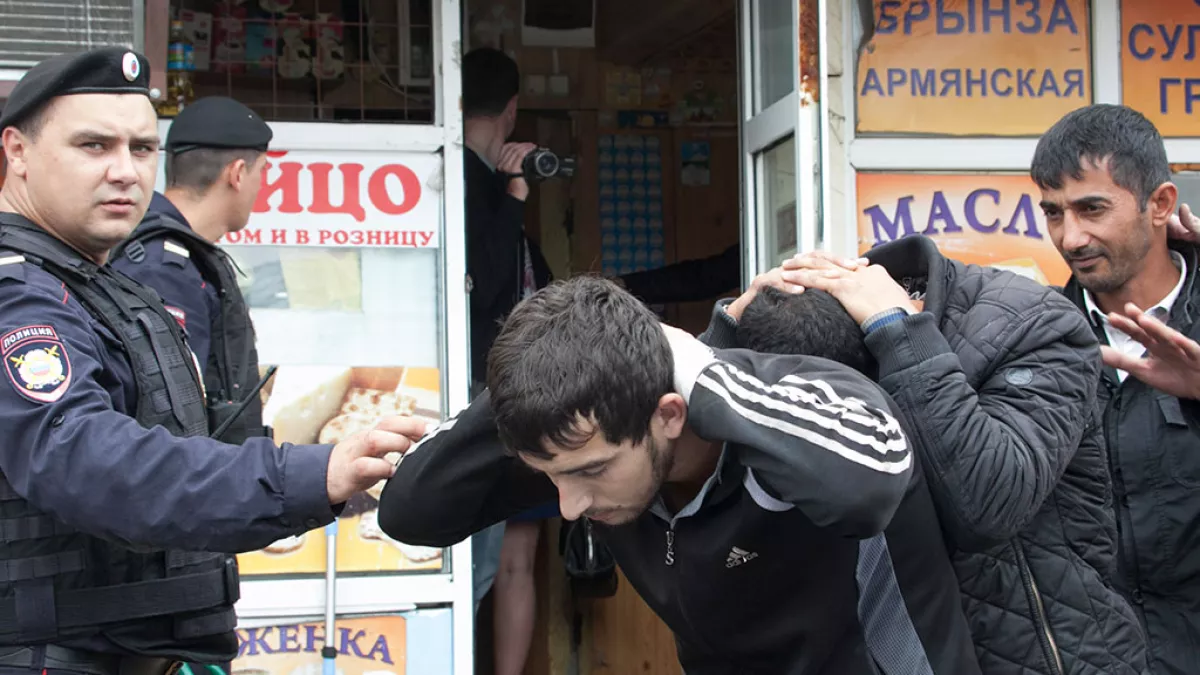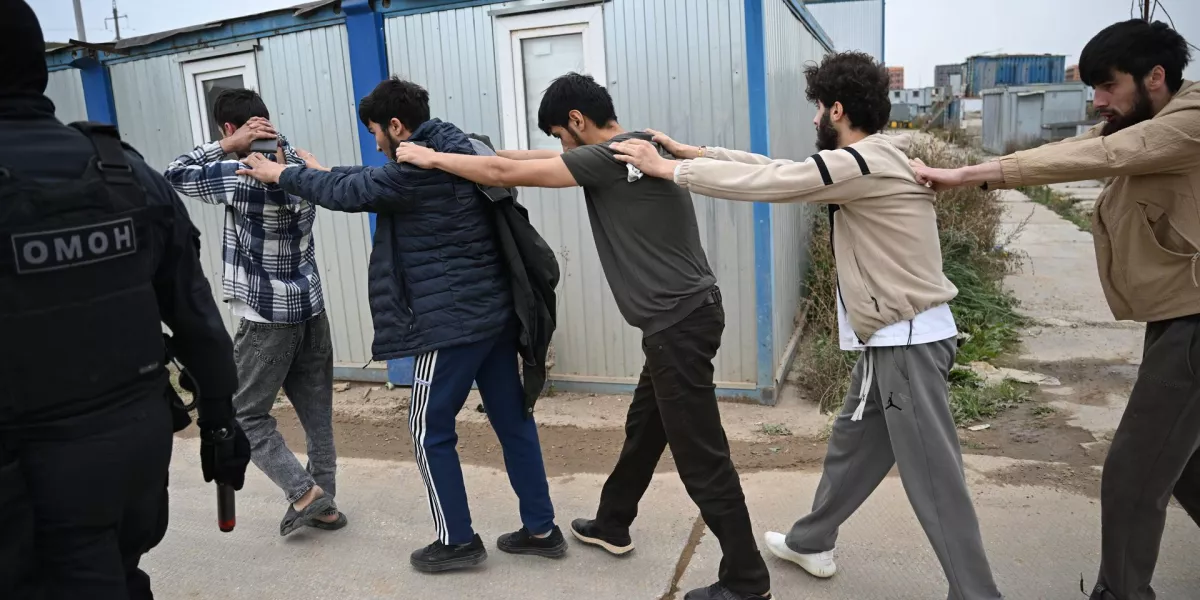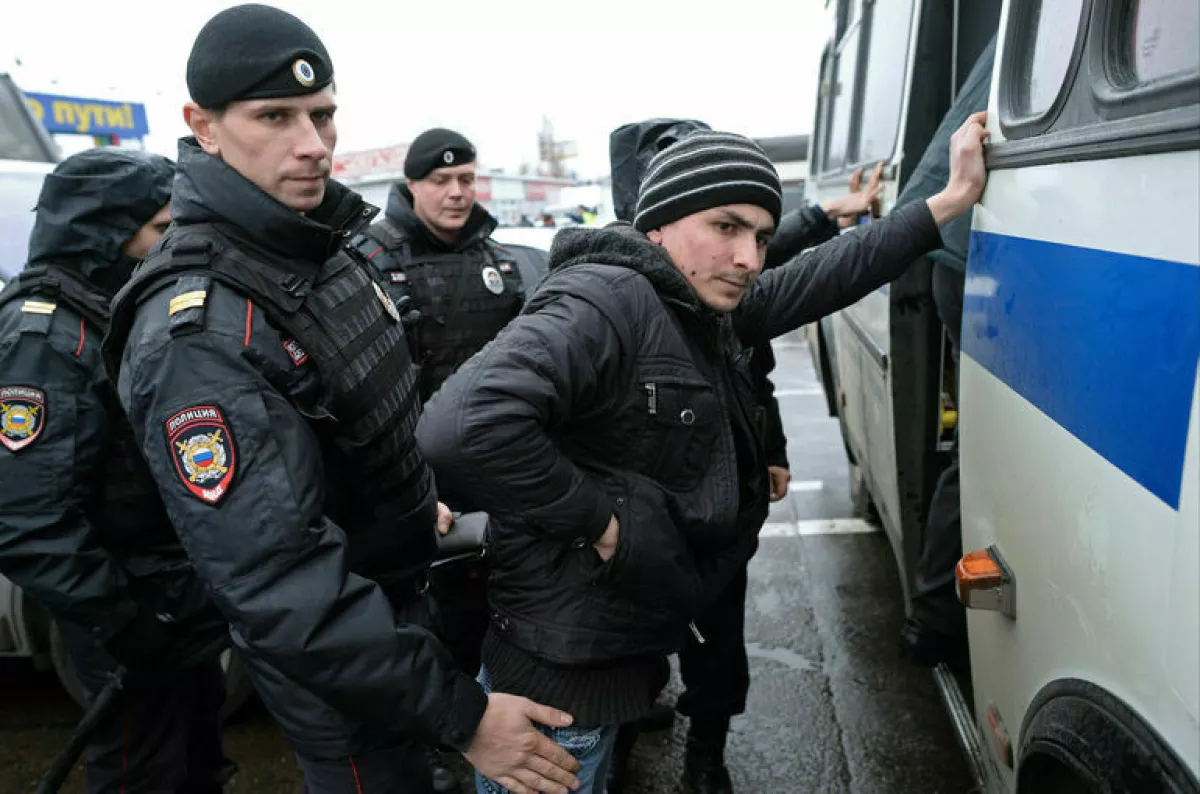Russia in expulsion mode: Doors closing on migrants CIS workforce losing ground
Although Russian media tend to quote Western far-right radicals and accuse “liberal elites” of promoting the “replacement” of Europe’s population, in practice Moscow’s migration policy is not very different from that of Brussels.
Before the coronavirus pandemic, Russia received up to 12 million visitors annually, making it the fourth most popular destination for migrants after the United States (51 million), Germany, and Saudi Arabia (13 million each). However, Western experts note that migration flows into Russia have always differed significantly in structure, profile, and reasons compared to other countries.
While people moving to developed states often face a foreign linguistic and cultural environment, most migrants to Russia came from CIS countries, primarily Uzbekistan, Tajikistan, and Kyrgyzstan. Many were familiar with the Russian language and culture since Soviet times, which facilitated their adaptation.
Visa-free entry, a practical absence of language barriers, higher wages, a large number of vacancies, and unemployment at home motivated many Central Asians to seek work in Russia. Modern migration largely continues processes that began before the USSR’s collapse, acquiring a more international character only after 1991. Unlike migration to Europe or the U.S., migration to Russia is largely cyclical rather than permanent—many arrive for seasonal work and return home after a few months.
The war in Ukraine, starting in 2022, the mass exodus of specialists dissatisfied with "special military operation" from Russia, and the demands of import substitution and military industry might have been expected to stimulate migration policy. Yet by 2025, the reality looks very different.

Since 2024, Russia has systematically tightened its policies toward migrants from the CIS. Many report dismissals, discrimination, and physical violence. Several regions introduced restrictions on the types of work migrants can perform. In Omsk, for example, they are prohibited from working in education, healthcare, passenger transport, trade, hunting, pharmaceutical production, and social services. In Samara, migrants are banned from working in the production of bread, dairy products, baby food, drinking water, and 20 other food categories, as well as in catering, food delivery, wholesale and retail alcohol trade, tobacco, retail pharmaceuticals, eggs, and milk products.
Police and other security forces have also begun conducting raids in areas frequented by migrants from Central Asia, the South Caucasus, and Moldova—dormitories, mosques, and markets. According to Dmitry Aristov, director of the Federal Bailiff Service, 87,000 foreigners were deported from Russia in 2024—nearly twice as many as in 2023. Foreign media report that the number of detained labor migrants is so large that specialized detention centers are overcrowded, forcing authorities to house migrants in local prisons, even though Russian law stipulates that foreigners detained for migration violations should be held in temporary detention centers.

To streamline expulsions, in 2024 Russia amended legislation, including changes to the Administrative Offenses Code, expanding police and Ministry of Internal Affairs powers to deport migrants without judicial oversight. Deportation orders can be executed immediately, with no right to appeal. Amendments to the Law on the Legal Status of Foreign Citizens introduced a “deportation regime,” allowing law enforcement to designate a migrant as a “controlled person” for migration-related violations and enter them into a “controlled persons registry.” Those listed face numerous restrictions, such as prohibitions on changing residence without permission, leaving their municipality, driving, or marrying. Violations can result in deportation without a court decision.
Attempts to recruit migrants for military service, likely involving participation in combat in Ukraine, further deter potential migrants from former Soviet states. Some migrants report that military personnel visit detention centers and offer contracts with promises of Russian citizenship. Central Asian laws consider participation in Ukraine’s military conflict as mercenary activity, punishable by imprisonment. For instance, in November 2024, an Uzbek court sentenced returning migrant Alisher Kholikov, who fought in Ukraine, to five years in prison.

At the same time, Russia has been actively encouraging labour migration from India, Sri Lanka, and African countries. For example, in Kaliningrad, the fish-processing plant “Za Rodinu” has brought in large numbers of Indian workers to address labour shortages. The company’s board noted that Indian workers were chosen deliberately: “We started bringing Indians because there are many of them, and they are unlike others already in Russia and unlikely to gain citizenship.”
However, analysts question the effectiveness of Indian labour. “Economists firmly believe Indian labor is not very productive. Their output is lower compared to European, American, and Japanese workers. What distinguishes Indian workers is their ‘special relationship with time’,” notes Sagib Sheikh, an expert at the “Economic Discussions” portal. The joke among foreigners is that IST (Indian Standard Time) could be reinterpreted as “Indian Stretchable Time.”
Beyond Indians, Russian companies have recruited workers from Africa. According to Komsomolskaya Pravda, while in the first half of 2023, Russian employers posted no more than 500 vacancies in African countries, from January to June 2024, job offers increased dramatically—39-fold in Kenya alone. Problems with African workers are similar to those with Indian employees: low education, language barriers, unfamiliar culture, and work ethics. Professor Alexander Safronov observes: “On sites where they perform manual labour, instructions can be conveyed through gestures, but beyond that, communication is very difficult.”
In conclusion, Russia’s migration policy is strikingly inconsistent, combining harsh measures against migrants from CIS countries with labour market liberalisation for workers from Asia and Africa. This likely reflects internal struggles within Russian authorities between those who understand the economy’s labour needs and those focused on stricter control measures.








